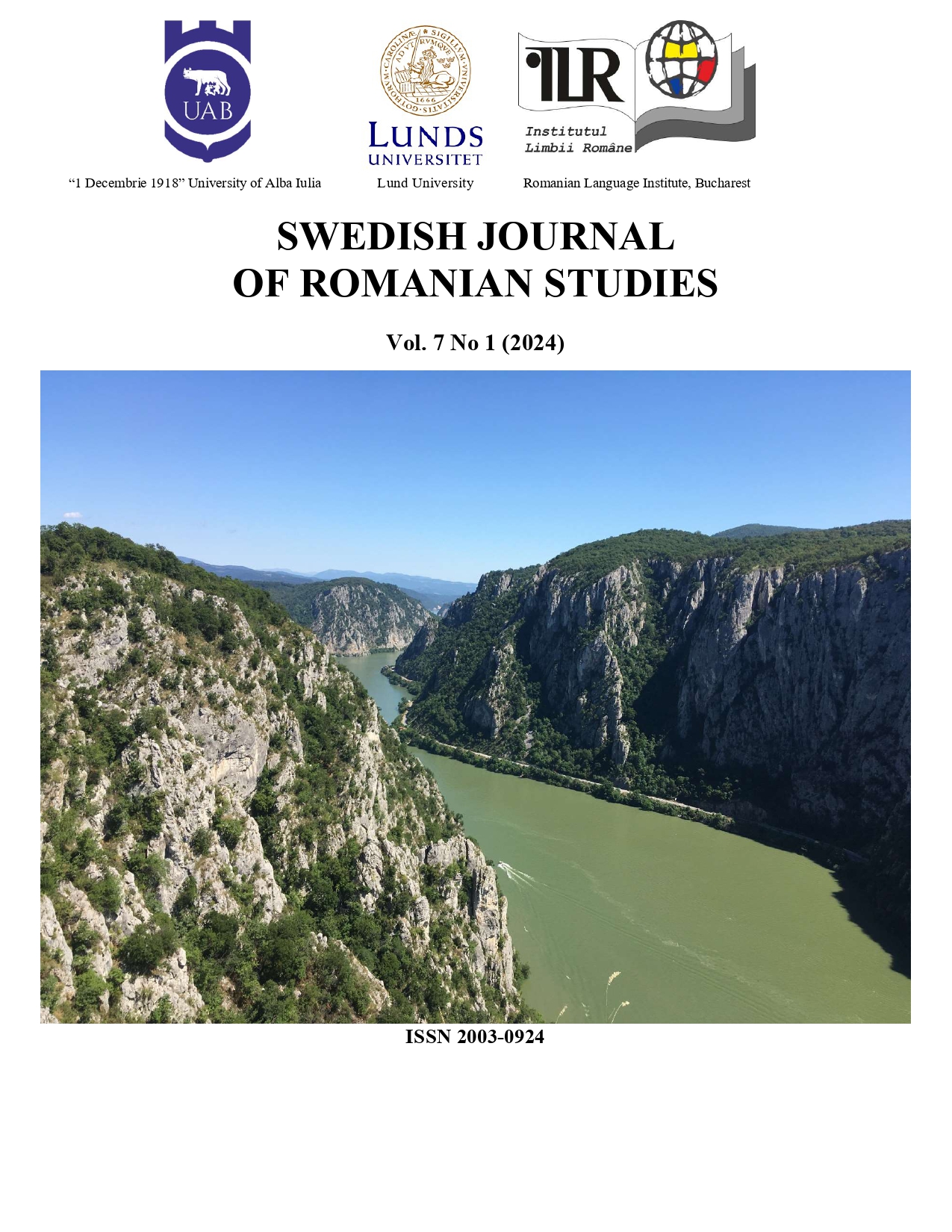The Swedish freemason Lars von Engeström and his description of Transylvania
DOI:
https://doi.org/10.35824/sjrs.v7i1.25930Keywords:
Lars von Engeström, Freemasonry, Transylvania , Romanity , Horea’s uprising of 1784Abstract
This study highlights one of the oldest and most beautiful bridges between the Kingdom of Sweden and the Romanian Lands in the 18th century. The analysis concerns Count Lars of Engeström, freemason, rector of the University of Lund, diplomat, and envoy of the Kingdom of Sweden in Vienna within the Habsburg Empire. In this capacity, he was able to obtain valuable information about the uprising led by Horea, Cloșca and Crișan in Transylvania in 1784. It was a rebellion that shook the reign of Emperor Joseph II. For this reason, its retaliation was commensurate. Thus, recounting a dramatic episode from the pre-modern history of the Romanians, Lars von Engeström left to posterity a beautiful fresco of Transylvania. He spoke about ethnic and confessional diversity, about the Romanian Roma, about the people living here and their problems. There is no definitive information confirming that he actually visited Transylvania. Nevertheless, the famous Swedish diplomat remains the greatest Northern European scholar to write about this 18th century Transylvanian uprising which was unique in its intercontinental resonance and had significant repercussions in the Swedish press of that era.
References
I. Archives
National Archives of Sweden (Riksarkivet) – Stockholm. Lars von Engeström. Germanica -BI – Kejsarna Chargé d’Affaires. Depecher 1784. Depecher 1785.
II. Books
Aldea, M. (Ed.). (2013). Lesicon románescu-látinescu-ungurescu-nemțescu quare de mai multi autori, in cursul’ a trideci, si mai multoru ani s’au lucratu. Lexicon Valachico-Latino-Hungarico-Germanicum quod a pluribus auctoribus decursu triginta et amplius annorum elaboratus est (1825) [Romanian, Latin and Hungarian dictionary written by many authors over 30 years (1825)]. Cluj-Napoca. [Electronic edition]. Retrieved December, 12, 2023 from https://lexiconuldelabuda.bcucluj.ro//site/login.php.
Câmpeanu, R., Dörner, A. E., & Varga, A. (2008). În pragul Europei: Instituțiile transilvane în epoca prereformistă [On the threshold of Europe: Transylvanian institutions in the pre-reform era]. Cluj-Napoca: Presa Universitară Clujeană.
Cosma, E. (2015). Împăratul călător şi ardelenii în memoriile lui Michael Conrad von Heydendorff cel Bătrân [The travelling emperor and the Transylvanian people in the memoirs of Michael Conrad von Heydendorff the Elder]. With a critical edition and translations from German by Ela Cosma, indexes by Simona Bala. Cluj-Napoca: Editura Argonaut / Gatineau: Symphologic Publishing.
Cristea, G., & Edroiu, N. (2001). Izvoare istorice suedeze privind Răscoala lui Horea [Swedish historical sources about Horea’s uprising]. Cluj-Napoca: Centrul de Studii Transilvane.
Cristea, G. (2001). Regi și diplomați suedezi în spațiul românesc: Secolele XVII-XX [Swedish kings and diplomats in Romania: 17th-20th centuries]. Cluj-Napoca. Academia Română: Centrul de Studii Transilvane.
Edroiu, N. (1976). Răsunetul european al răscoalei lui Horea [The European spread of Horea’s uprising]. Cluj-Napoca: Edit. Dacia.
Hurdubețiu, I. (1985). Istoria Suediei [History of Sweden]. București: Edit. Științifică și Enciclopedică.
Lagerqvist, O. L. (2003). History of Sweden. Stockholm: The Swedish Institute.
Pavel, E. (Ed.). (2018). Școala Ardeleană [Transylvanian School]l, vol. I-IV. Foreword by Eugen Simion. București: Academia Română, Fundația Națională pentru Știință și Artă, Muzeul Național al Literaturii Române.
Tegnér, E. (1876). Minnen och anteckningar [Notes and memories [I-II]]. Stockholm: F.&G. Beijers Förlag.
III. Studies
Bergroth, T. (2010). The Swedish Order of Freemasonry in the 18th century: Short history of the Order. Transylvanian Review, XIX(2:2).
Caba, M. (2023). Școala Ardeleană, primul nucleu “illuminist” al culturii române [The Transylvanian School, the first "enlightened" nucleus of Romanian culture]. Revista Armonii Culturale. Retrieved December, 12, 2023 from https://armoniiculturale.ro/scoala-ardeleana-primul-nucleu-iluminist-al-culturii-romane/.
Cosma, E. (2018). Naţiune, număr şi teritoriu naţional în Transilvania (1848-1850) [Nation, number and territory in Transylvania (1848-1850)]. Anuarul Institutului de Istorie “George Bariţiu” din Cluj-Napoca, Series Historica, Tom LVII, 47-70.
Mehedinți-Beiean, M. (2012). Transylvanian identities: Swedish travellers’ observations for the 17th-19th centuries realities. Studia Universitatis Babeș-Bolyai. Historia, 56(1-2), 34-56.
Svenskt Biografiskt Lexikon [English Dictionary of Swedish national biography]. (n.d.). Lars von Engeström. Retrieved from https://sok.riksarkivet.se/sbl/mobil/Artikel/16158
Downloads
Published
How to Cite
Issue
Section
License
Copyright (c) 2024 Attila Carol

This work is licensed under a Creative Commons Attribution-NonCommercial 4.0 International License.
Authors who publish with this journal agree to the following terms:
a. Authors retain copyright and grant the journal right of first publication with the work simultaneously licensed under a Creative Commons Attribution-NonCommercial 4.0 International License that allows others to share the work with an acknowledgement of the work's authorship and initial publication in this journal.
b. Authors are able to enter into separate, additional contractual arrangements for the non-exclusive distribution of the journal's published version of the work (e.g., post it to an institutional repository or publish it in a book), with an acknowledgement of its initial publication in this journal.
c. Authors are permitted and encouraged to post their work online (e.g., in institutional repositories or on their website) prior to and during the submission process, as it can lead to productive exchanges, as well as earlier and greater citation of published work (See The Effect of Open Access).

